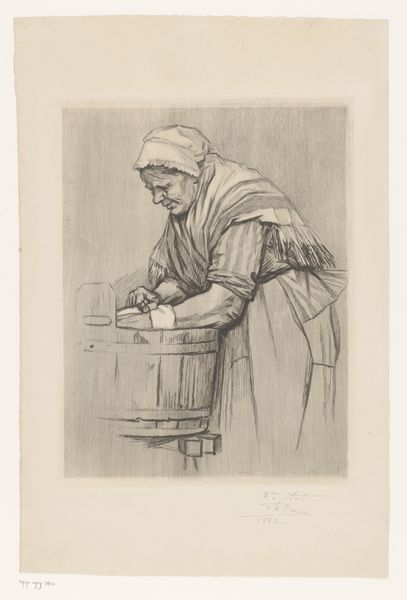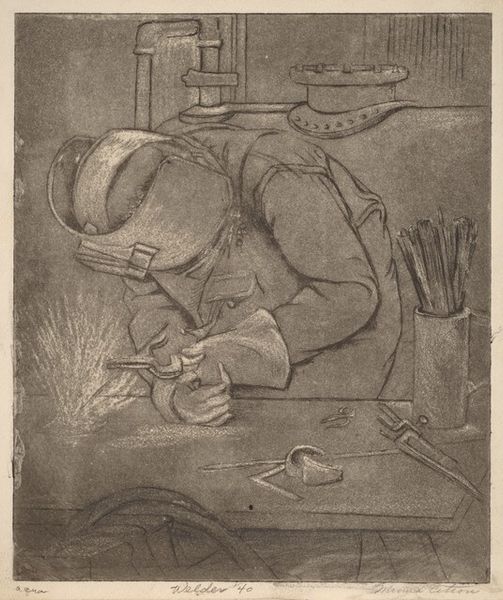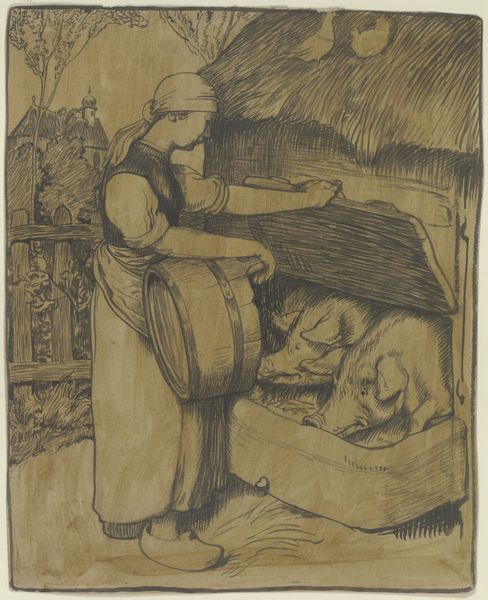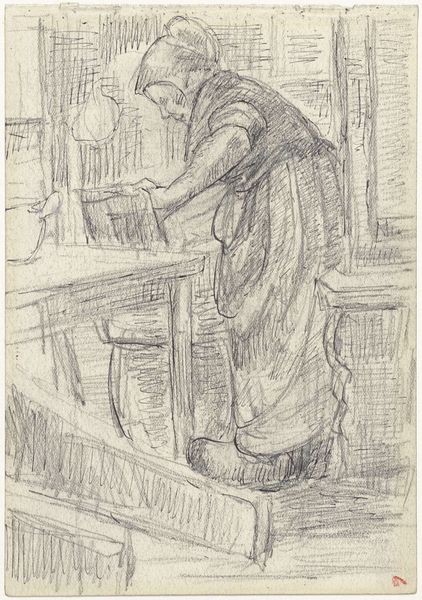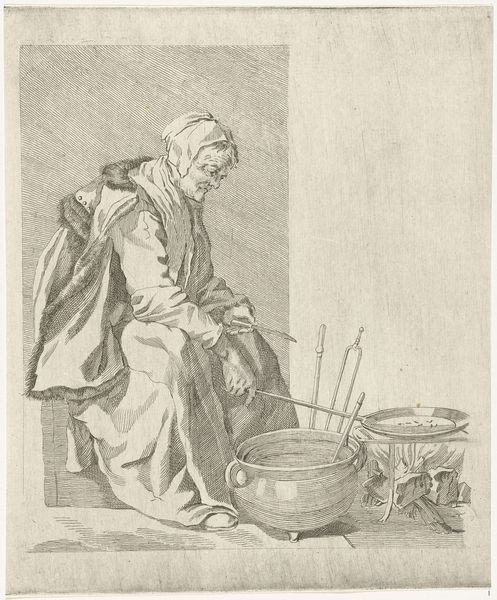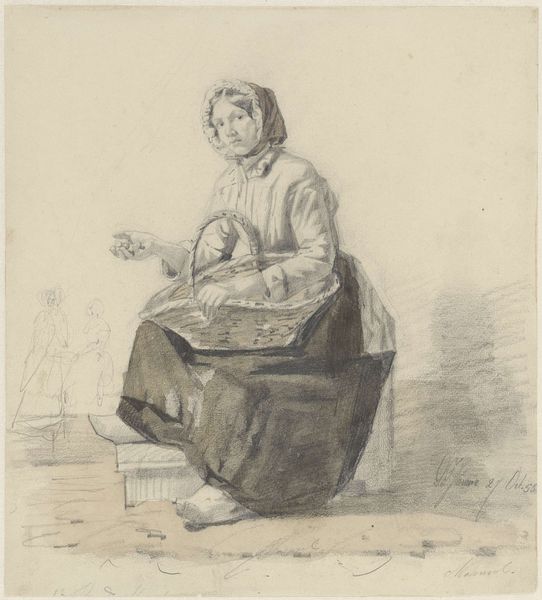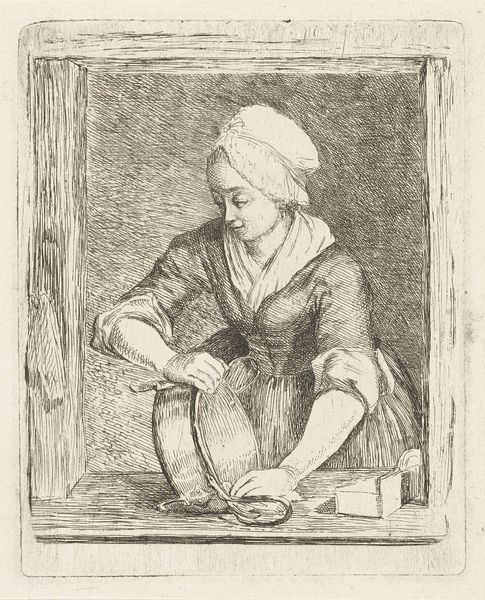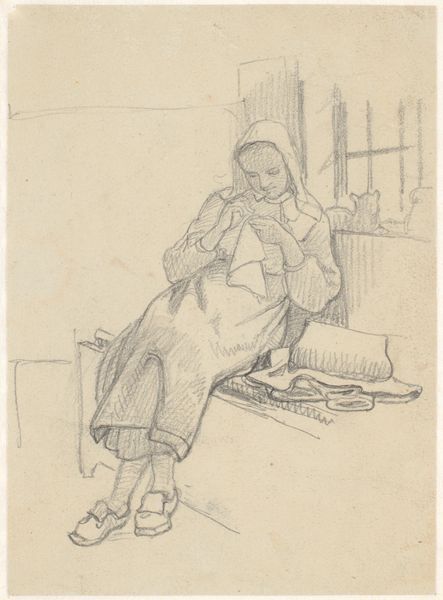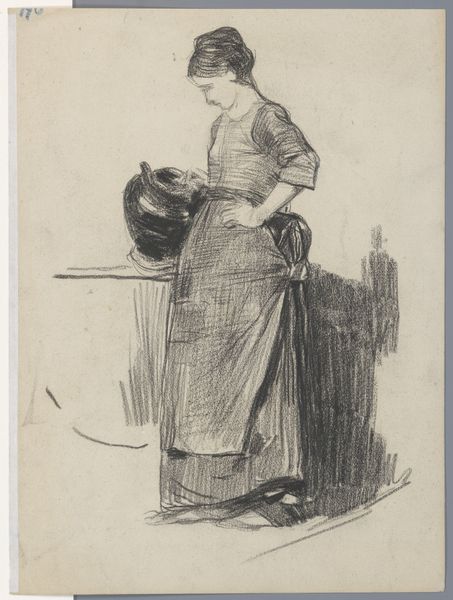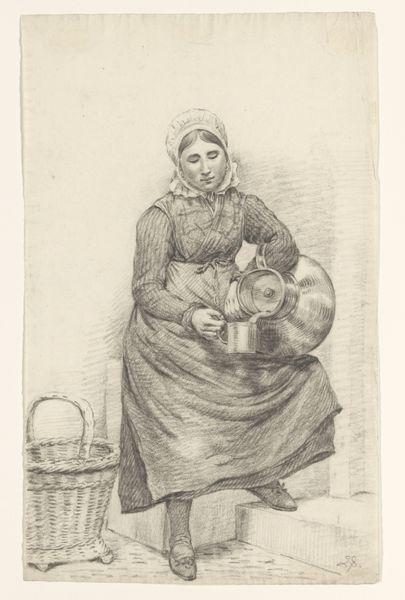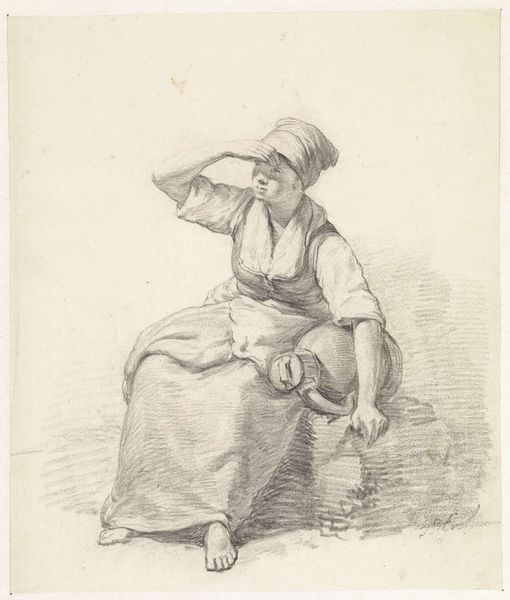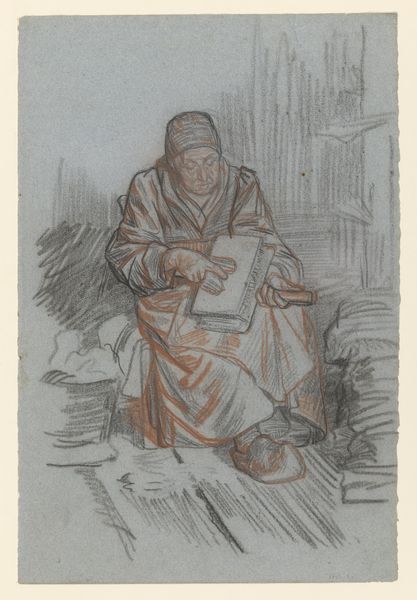
drawing, paper, pencil
#
portrait
#
drawing
#
pencil sketch
#
landscape
#
paper
#
pencil
#
genre-painting
#
realism
Dimensions: height 318 mm, width 209 mm
Copyright: Rijks Museum: Open Domain
Editor: So, here we have Jan Veth’s "Strijkende vrouw," made sometime between 1874 and 1925. It's a pencil drawing on paper, depicting a woman ironing. It's deceptively simple, but something about the angle makes it seem almost… oppressive? What do you see in this piece? Curator: I see a window into the often-unseen labor that structures our societies. Veth offers us a glimpse into the domestic sphere, a space historically relegated to women and often devalued. Consider the social and economic context; what does it mean to represent this particular type of work? Editor: It definitely brings up questions about the role of women. I hadn’t thought about how "unseen" this labor was supposed to be. Curator: Exactly. The genre painting, with its roots in Realism, aimed to depict everyday life, but it also inevitably revealed existing power structures. What is Veth suggesting about the sitter’s social standing, her identity, through this act of ironing? Editor: It makes you wonder about her story, her daily life beyond this single task. The laundry hanging in the background almost becomes symbolic, doesn't it? Of this endless, cyclical chore. Curator: Precisely! The cyclical nature of domestic tasks traps many women within these societal roles. This piece isn’t just a portrait, but also a commentary on the constraints placed upon women. Does it resonate with any contemporary dialogues around labour or gender inequality? Editor: It certainly makes you think about the divisions that still exist, and how far we still have to go. Thanks, this definitely gives me a fresh view on Veth’s art. Curator: And I'm reminded that every piece can trigger timely socio-political inquiries.
Comments
No comments
Be the first to comment and join the conversation on the ultimate creative platform.

